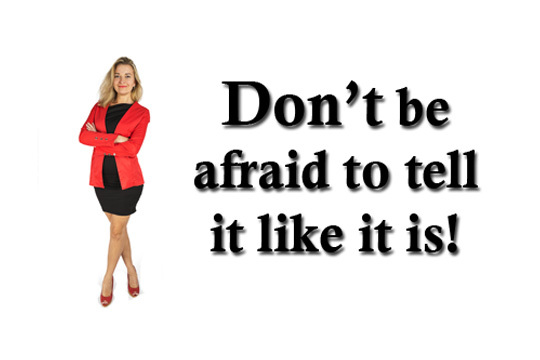Helene Lerner's Blog, page 59
January 18, 2016
3 Of Our Biggest Fears And How To Transform Them
 You have probably read about the most common fears but how do we face them so that they don’t hold us back. How do we “feel the fear and do it anyway?”
You have probably read about the most common fears but how do we face them so that they don’t hold us back. How do we “feel the fear and do it anyway?”
Fear of letting people in
Whether it is a romantic love that’s gone sour, a friend who was intrusive, a co-worker that has burned you--we’ve all been hurt, and it is hard to get back on the horse. But what is the alternative? Being alone and not getting the things you really want. That just doesn’t cut it.
Helpful Hint: Surround yourself with like-minded people. They are your personal network—people who care about your well-being. If you decide to get your feet wet again, and something doesn’t feel right, confide in them and see what they think. They have your best interest at heart.
Fear of change
Change is scary because it is unknown. You feel comfortable where you are, why would you want to risk messing that up? Something could go wrong and you could end up in a worse situation than you are currently in. Sometimes we cling to staying stuck because it feels safer than getting out there.
Helpful Hint: Know that when you step out of your comfort zone and try something different, it will not feel comfortable. But that doesn’t mean you are doing anything wrong. In fact, you are doing everything right! You are pushing yourself to grow in new ways.
Fear of success
This type of fear may seem strange, and you may ask yourself—we all want to succeed, why would someone be afraid of getting what they want? Some of us may have been raised by parents who were unhappy themselves and projected onto us that we wouldn’t “amount to much,” so when we start to achieve some level of success, we may try to sabotage it.
Helpful Hint: Reach out for help (a therapist or counselor) and get clear where your feelings of worthiness come from. They probably have nothing to do with you and everything to do with an unhappy person that was part of your life early on. Reaffirm that you deserve success.
5 Ways to Handle Someone’s Anger Outburst
 Imagine a large, angry tiger leaping toward you, its teeth bared in a ferocious snarl. As you imagine this, you may feel your breath catching and the urge to run. In the grip of your desire to flee, you lose the battle before it begins. The tiger, able to outrun you, sinks its claws and teeth into your back.
Imagine a large, angry tiger leaping toward you, its teeth bared in a ferocious snarl. As you imagine this, you may feel your breath catching and the urge to run. In the grip of your desire to flee, you lose the battle before it begins. The tiger, able to outrun you, sinks its claws and teeth into your back.
When you react to a threat, you rarely think clearly and sometimes don’t think at all. If, like most people, your reaction to another’s anger is one of fear, you may temporarily stop breathing or breathe shallowly and rapidly. When that happens, you momentarily lose easy, simultaneous access to both mental hemispheres. Your reaction “pulls” you toward processing information in your right hemisphere, the hemisphere that comes into play when you emotionally react. You become a hostage to your emotions.
To professionally handle another’s anger, you also need the ability to think and to put your thoughts into language. These functions, along with the ability to strategize and think ahead to future consequences, are located in your left hemisphere. This explains why you may occasionally be unable to speak when confronted by an angry person.
Regain control of your own reaction by slowing your breathing
If you are able to calm yourself by slowing and deepening your breathing, you increase your ability to access left and right hemispheres simultaneously and to couple analysis and problem-solving with emotion. Controlling your initial instinctive reaction thus enables you to respond rather than react and leaves you free to choose whether and how to handle the angry person.
Learn what fuels the other’s anger
Although you can’t expect the angry person to react rationally, as they’re powered by adrenaline, you can learn what ignited them. Listen with an open-mind and put yourself in the other’s shoes. To show them you’re not taking their anger lightly, you might say, “I want to understand what’s making you mad.” Angry individuals calm down when they feel their concerns are being heard and addressed.
Don’t argue
Your biggest challenge – don’t let other’s words or anger ignite yours. Two angry people resemble hand grenades threatening each other, with one going off and then the other. If you argue, you feed the other’s anger.
Give space
If tensions continue to flare, you may need to give the other person space to allow them to gather their thoughts. You yourself may want to call a time out and exit the argument.
What results do I want here?
Thinking “what results do I want?” and “if I truly want those outcomes, how should I act?” helps you move the situation forward toward a solution. As you listen open-mindedly, search for common ground. If the angry person makes valid points accept them and, if it’s warranted, genuinely apologize.
Follow these five steps and you may find you’ve tamed the tiger.

© 2015, adapted from Solutions. Curry is author of Solutions and Beating the Workplace Bully. Follow her @ lynnecurry10 or on workplacecoachblog.com.
 6 Ways to Respond to Critical People
6 Ways to Respond to Critical People
3 Ways to Be a Successful Leader

Have you had the good fortune to cross paths with at least one leader in your career that made a lasting difference in your life, how you see yourself, or your outlook? I’ll never forget the excellent leader I witnessed early in my career. He was open to seeing things the way they were, listened in an entirely present way to those around him, passionately and persuasively advocated for what was in the best interest of the company. The energy he created was powerful for others and influenced outstanding results for the enterprise.
How can you develop this type of impact? These three fundamental things will make the difference for you:
1. Be fully present to what you are doing. Rather than being a creature of habit, making mistakes and having to apologize, develop a clear intention for your choices. Leading with intention requires conscious attention to what you intend to achieve and what is going on around you. Intentional behavior helps you to make strategic decisions about how to communicate and approach challenges on your way to results. If you have a biased or fixed idea about a person or a situation, you may miss opportunities to see things clearly - as they are. To know whether you are fully present and intentional, ask yourself:
Am I clear about my intentions?Am I distracted by my computer, phone, or what I have to do next so that I am not fully present?Do I have preconceived notions or mindsets about a person or situation?2. Practice self-reflection to become more aware. Successful leaders benefit by self-awareness. They see their “self” as the primary source for achieving results. Self-awareness enables you use your emotions to think more clearly and helps you to be more intentional. It helps you to learn from successes and mistakes. You practice self-reflection by asking yourself questions about who you are to others, what you are doing to learn and grow, and the impact your leadership style has on others. Ask yourself:
Why do I do the work I do?How open am I to my learning?How would others describe me as a leader?3. Make a connection between your organization’s mission and your role. Context is critical. You may have heard the expression, “culture eats strategy for lunch.” Your role as a leader is to ensure the environment is supportive of getting results aligned with the organization’s mission and vision. Invitation forms culture, not a mandate. Culture forms by commitment, rather than coercion. When others' behavior is out of alignment with the organization's goals, it’s up to you to set the tone for what is right through your communication and actions. You are a model and a coach - giving explicit directions, listening and observing, giving feedback and asking questions skillfully and strategically. These actions have a beneficial effect on the environment and the culture under your leadership. Ask yourself these questions:
What kind of environment do I create in my interaction with others?What are the behaviors required for the future success of the business?What can I do to model these behaviors?Use these questions as a regular practice, and your leadership will make a considerable difference to others around you and your career.

Andrea Zintz, President, Strategic Leadership Resources (SLR) www.strategicleadershipresources.com
 5 Ways to Get From Manager to Leader
5 Ways to Get From Manager to Leader
January 15, 2016
3 Ways To Get Back Up When You’re Feeling Down

Accept the things you cannot change
It’s normal to be upset when something goes wrong, but don’t beat yourself up about circumstances you have no control over. Instead, use that energy to take the next right action. If someone disappointed or hurt you, clear the air. If you got rejected by a job, go out and look for a BETTER one.
Be reflective
What do you really want that you’re not getting? How can those around you support you to help you reach your goals? Focus on the future and don’t give up.
Don’t let them win
If a negative person has gotten you down, their words are reflection of how they feel about themselves and probably have little to do with you. Challenge yourself to prove them wrong. Living well is the best revenge.
3 Times To Tell It Like It Is And Not Be Too Nice
 For many of us, it isn’t always easy to give our honest opinions. We might be afraid that we’ll hurt someone’s feelings or say something “stupid,” but being too nice can sometimes be worse for us than being blunt. A study published in the Journal of Personality showed that being too nice can actually lead to destructive behavior. This doesn’t suggest that you should be mean, but there are times when you should tell it like it is…
For many of us, it isn’t always easy to give our honest opinions. We might be afraid that we’ll hurt someone’s feelings or say something “stupid,” but being too nice can sometimes be worse for us than being blunt. A study published in the Journal of Personality showed that being too nice can actually lead to destructive behavior. This doesn’t suggest that you should be mean, but there are times when you should tell it like it is…
When you feel uncomfortable
A guest at a party says something offensive. A co-worker makes a mistake and asks you to cover for him if your boss asks about it. Speak up! If you keep it to yourself, you’ll just end up angry and resentful.
When you want to get noticed at work
You’re in a meeting or brainstorming session and someone’s idea isn’t quite right. You want to springboard off the suggestion, but you don’t want to hurt the person’s feelings. Don’t be afraid to share your thoughts. Your manager will see that you are a team player, and the collaboration could lead to amazing things. After all, two heads are better than one.
When someone asks for your opinion
Your friend asks if you think she should cut her hair short, and you don’t think it will look good. A colleague wants you to proofread his cover letter, and it needs major improvements. You want to make them feel good, so you don’t say what you really think. Don’t. If they didn’t value your insight, they wouldn’t have asked for your feedback in the first place.

Get a Grip on GUILT in 3 Simple Steps
 Do you feel like you should be working when you’re at home, but when you’re at work you feel guilty about something at home? You know this loop saps your energy but you don’t know how to stop it. These three steps will blast away your guilt loop.
Do you feel like you should be working when you’re at home, but when you’re at work you feel guilty about something at home? You know this loop saps your energy but you don’t know how to stop it. These three steps will blast away your guilt loop.
1. Accept
Guilt is natural because your brain is designed to scan for threats, and social threats are survival threats to the brain we’ve inherited from earlier mammals. So as soon as you relieve a threat, your brain goes looking for the next most pressing threat. Does this sound like a no-win situation? The more successful you are at putting out fires, the more your brain searches for another fire to put out. If you hate your brain for doing this, you will be at war with yourself forever. Instead, simply accept the primal operating system inside you and thank it for its concern. Your inner mammal wants you to be safe, so pet it and remind it that you’re okay.
2. Celebrate
When you put out a fire, pause to celebrate before you rush to the next fire. This may feel risky or selfish at first. You may have learned that it’s wrong to feel good when others feel bad. If that were true, no one in human history would ever have felt good. You can feel good in a world full of threats if you give yourself permission to enjoy your accomplishments. Not just the big “someday” accomplishments - you can accomplish something worth celebrating every hour. Celebrating doesn’t mean putting something in your mouth that has long-term side-effects. It means dwelling on the pleasure of having solved a problem.

*For more infographics about the brain, visit innermammalinstitute.org
3. Evaluate
We are often told not to judge, but judging is how the brain works. It constantly takes in new information and decides whether an adjustment is warranted. If you don’t make a judgment, you’re stuck. Frozen. So the next time you feel a guilt loop coming on, find the new information that triggered it and evaluate it for one minute. Just one. That’s long enough to decide whether to persist in the direction you were headed or shift course. You can’t solve the problem in one minute, but you will know whether to interrupt your current priorities or persevere in what you were doing. If the guilt lingers, pull out your ACE and Accept and Celebrate again before you allow yourself one more minute to Evaluate.
We will always be torn in different directions because our brain is designed to make wise decisions about where to invest your energy. If you were a gazelle, you’d be torn between the dry patch of grass that’s safely near the herd and the lush greener pasture that puts you in an exposed position. Fortunately, evaluating these options is exactly the job your brain evolved to do!

- Dr. Loretta Breuning is the founder of InnerMammalInstitute.org and author of Habits of a Happy Brain: Retrain Your Brain to Boost Your Serotonin, Dopamine, Oxytocin, & Endorphin Levels
6 Ways to Respond to Critical People
 When you least expect it, a coworker tells you just what she thinks of you. Or, just after you’ve tried your best in a hard situation, your supervisor flattens you with the statement “not good enough.”
When you least expect it, a coworker tells you just what she thinks of you. Or, just after you’ve tried your best in a hard situation, your supervisor flattens you with the statement “not good enough.”
You know you’re not perfect, but ouch!
If unexpected criticism stings more than you want, try these strategies:
Pause before you respond
Though your first instinct may be to defend yourself when criticized, learn to pause first. By pausing, you short-circuit your defensiveness, hear what is said, and give yourself the chance to respond wisely.
The secret to taking criticism well? Select a choice other than “attack” or “defend”
If someone says, “You didn’t listen to me,” you can say “I’m sorry” (agreeing), “I heard enough” (disagreeing), or “What did I miss?” (asking a question). Asking a question often works best as it takes control of the situation and moves you and your critic toward a solution.
Agree and move forward
If you receive accurate criticism, your best choice may be to accept the criticism. If a coworker points out errors you missed in a report you filed, take another look at the report. If she's right, admit it, make the corrections, and move on. If your boss says, "You blew it!” and you did, agree and make the needed improvement.
Agreeing with accurate criticism doesn't mean you accept others' opinions without thinking; rather it moves you through the criticism to a productive solution. Agreement comes from a powerful source – your intent to accept responsibility and move forward.
You have the right
You have as much right to evaluate your behavior as your critic. If someone criticizes you inaccurately, speak up. If a co-worker says, “You should have gone to that meeting,” and you disagree, you can respond, “I evaluated the agenda and decided against attending.”
When you disagree with inaccurate criticism, a simple "I don't agree," or a short explanation is much more convincing than a lengthy defense.
If you don’t understand the criticism or if a dialogue would help, ask the other person a question
Often, we react to criticism so quickly we don’t learn from it. If someone says, "You're irritating," and you insist, "I'm not!" or attack with "You're the one who's irritating!" you shut off dialogue and potential improvement. If you instead ask, "What did I do that irritated you?" you open a dialogue that can lead to an improved relationship or situation. Further, if the other person attacked you unfairly, when you ask him to give more of an explanation, your proactive posture moves the responsibility of explaining onto him.
Don’t magnify
Finally, don’t make criticism bigger than it is. If your supervisor tells you to improve your work performance, don't dive off the deep end and turn in your resignation. If a coworker says you let her down, don't refuse to speak with her. Assess what was really said and look at where you need to improve. There's no benefit to holding onto the criticism once you've heard it. Learn, change, and move on.

© 2015, adapted from Solutions. Curry is author of Solutions and Beating the Workplace Bully. Follow her @ lynnecurry10 or on workplacecoachblog.com.
3 Strategies for Turning the Tables on a Workplace Bully
3 Strategies for Handling Drama Kings and Queens
January 14, 2016
5 Ways to Get from Manager to Leader
 What is the difference between a manger and a leader? Managers are concerned with building a sustainable foundation for strong performance and achieving goals and measurable outcomes. On the other hand, leaders anticipate the future and develop plans to leverage that future for a competitive advantage to the organization.
What is the difference between a manger and a leader? Managers are concerned with building a sustainable foundation for strong performance and achieving goals and measurable outcomes. On the other hand, leaders anticipate the future and develop plans to leverage that future for a competitive advantage to the organization.
Managers learn from the past and apply to the present. Managers track performance, analyze gaps between what is actually happening and what should be happening, and ensure processes support efficiency, effectiveness, and customer satisfaction. Managers are also concerned with compliance to regulations and company rules. Lastly, managers care about sustaining good results. These critical behaviors ensure that customers and shareholders get what they expect on a consistent basis. If this is what you do, managing is a very important job! It is the foundation for an organization’s success.
Leaders are concerned with growing the future. Leaders visualize the future and articulate it to others in the form of a vision statement. They anticipate trends in the market, and set clear direction so followers know what to do and how to set priorities. And leaders open new possibilities for the organization and inspire the commitment of people toward a shared vision of the future and executing the vision and the plan. Lastly, leaders trigger innovation through the inspiring vision and what might be possible.
Can you be both a manager and a leader? I believe everyone should be both, since you prove your credibility through delivering consistent results through demonstrated management skills. Leaders are critical to growth and can rise to great heights in an organization.
How can we progress from managing to leading? Here are 5 ways to get there:
1. Cultivate an outside-in perspective of your organization. So many aspiring leaders are unable to distinguish between managing and leading. Leadership starts with thinking as if you were one of the key stakeholders of the organization - customers, regulators, and suppliers. Shift your perspective, and this will give you access to information about your market, the developing trends, and spark insights that can lead to growth.
2. Practice inclusive and open-minded thinking. Managing encourages you to focus on analytics and details, while leading requires you to reach for new and different perspectives with an open mind. Ask others who think differently than you for their points of view and listen for what might be possible for growth and improvement.
3. Develop your strategic thinking skills. Research on leadership puts the ability to think strategically the number 1 skill of effective leaders. This requires taking a long-range, broad approach to problem solving and decision making through objective analysis, thinking ahead, and planning.
4. Use your imagination to visualize what is possible for your organization. It could be a new process that will elevate outcomes to a new level, a new idea for business’ growth, or a new service that will attract and delight customers.
5. Develop your executive presence. What does this mean? It is an inside-out, authentic projection of three things: your expertise or “gravitas”; your depth of professional knowledge and competence that contributes to excellence in performance. This is the basis for raising credibility so others will listen. Gravitas must be balanced by “grit”, which is your uncompromising commitment to performance excellence and strategic focus. The third element of presence is “grace”; your command of relationship intelligence and inspiring communication, and their critical role in raising performance. It takes the three “Gs” in balance to have a strong presence.
Take these 5 steps to becoming a leader, and you are guaranteed to be considered one of the high potential people for key leadership roles!

Andrea Zintz, President, Strategic Leadership Resources (SLR)
www.strategicleadershipresources.com
 Start Being Seen as a Confident Leader
Start Being Seen as a Confident Leader
January 13, 2016
5 Steps From Fear To Freedom
 When we’re willing to view life as the teacher, even in the midst of uncertainty, a journey begins. This journey—some might call it the spiritual path—challenges us to shift from fear of uncertainty to trusting life in the face of that which we can’t know and don’t understand. After interviewing many people about what they’d learned on their own spiritual journeys, I discovered that the journey from fear to freedom, which is all about coming into right relationship with uncertainty, is a predictable journey, one that many have traveled before you and many will travel after you. As you read through the five phases, consider where you are on your own journey. It is a map of sorts and can help you assess where you are on your path.
When we’re willing to view life as the teacher, even in the midst of uncertainty, a journey begins. This journey—some might call it the spiritual path—challenges us to shift from fear of uncertainty to trusting life in the face of that which we can’t know and don’t understand. After interviewing many people about what they’d learned on their own spiritual journeys, I discovered that the journey from fear to freedom, which is all about coming into right relationship with uncertainty, is a predictable journey, one that many have traveled before you and many will travel after you. As you read through the five phases, consider where you are on your own journey. It is a map of sorts and can help you assess where you are on your path.
The Journey from Fear to Freedom...
Phase 1: Unconscious Fear of Uncertainty. I stay in my comfort zone and avoid the unknown at all costs. What I don’t know feels dangerous, but I’m not conscious of how uncomfortable I am with uncertainty. I never get close enough to the unknown to really feel it. I do not act without a sense of certainty about the outcome. I expend a lot of energy avoiding risk.
Phase 1 Motto: “Better safe than sorry.”
How to navigate Phase 1: Start becoming aware of how your inclination to cling to certainty limits your freedom. Ask yourself, “Is this working for me? Is staying in my comfort zone really protecting me?”
Phase 2: Conscious Fear of Uncertainty. What I don’t know feels dangerous, but I’m aware of the fear I feel. Situations of uncertainty provoke feelings of anxiety, worry, and fear in me. This leads me to avoid uncertain situations and to try to control my world. But though I prefer certainty, I’m aware of how clinging to it is holding me back. I resist the unknown, but I realize it’s hard to have adventures if you’re always waiting to be sure of the future.
Phase 2 Motto: “The only thing certain in life is uncertainty.”
How to navigate Phase 2: Be gentle with yourself as you recognize how your drive for certainty limits your possibility. Don’t beat yourself up because you resist uncertainty. Pat yourself on the back for being brave enough to admit it. From a place of radical self-compassion, you will naturally begin to shift into Phase 3.
Phase 3: Uncertainty Limbo. I don’t know whether the unknown is dangerous or not. I’m not entirely at ease with what I don’t know, but I’m not resisting it, either. The unknown doesn’t outright scare me, but I don’t seek it out. I’m starting to sense the freedom that comes with making peace with uncertainty, so I’m willing to be cautiously curious and let my fear of the unknown teach me.
Phase 3 Motto: “I’m curious about the unknown, but I have my reservations.”
How to navigate Phase 3: Question everything. Stay open. Be curious. Resist the urge to create artificial certainty in order to ease any discomfort you still feel with the unknown. If you seek out too much certainty during this phase, you’re likely to allow fear to create something not quite in alignment with the full realization of what’s possible. Live in limbo and do what you can to comfort yourself and find your peace.
Phase 4: Uncertainty Seduction. Not only am I not scared by uncertainty, I’m downright attracted to it. I realize there is more to know and the only way to know it is to lean into the unknown and explore it. To me, the unknown is not scary, it’s somewhat seductive. I’m more in touch with discovering, and with the enlivenment that accompanies the discovery process, than I am with knowing. Discovery is sexier than certainty, and I’m at risk of being reckless as uncertainty seduces me. I’m so willing to entertain the unknown, to step into it and see what’s there, that I don’t always practice discernment. I’m willing to become an adventurer, but I have to remember not to yo-yo to the opposite end of the uncertainty spectrum.
Phase 4 Motto: “The flip side of the fear of uncertainty is the excitement of possibility.”
How to navigate Phase 4: The key to Phase 4 is discernment. When the unknown becomes compelling, it can be tempting to leap blindly, but this can get you in trouble. Someone who experiences no fear in the face of the unknown is at risk of becoming reckless. Healthy behavior in Phase 4 allows you to approach uncertainty with discriminating decision making, fueled not by fear, but by the integrity of the soul and the guidance of your intuition.
Phase 5: Surrender. I don’t know, but I trust anyway. I’m not afraid of the unknown, and I’m not seduced by it, either. I practice discernment. I sense that there is an organizing principle I may never fully understand, but I have faith that leaning in this direction is safe. Good things may happen when I lean into the unknown. Bad things may happen, too. But regardless of what happens, I trust that I live in a purposeful universe and that there is meaning in all outcomes. I am simply open to wonder, and I value freedom more than I value certainty.
Phase 5 Motto: “The only way to experience life’s richness is to surrender to the unknown.”
How to navigate Phase 5: Enjoy! Phase 5 tends to be very peaceful, but you don’t usually land there and stay there. Remaining in Phase 5 is a constant practice. If you find yourself slipping back into fear in the face of the unknown, remind yourself to trust that there are unseen forces guiding you in ways you may not understand until you look back.
It’s A Process!
Keep in mind that your journey through these five phases may not be linear. You may leap forward from one phase to the next, only to find that you regress in times of loss or trauma. Because we’re often more comfortable with uncertainty in some areas of our lives than in others, you may not be in the same phase in all aspects of your life. For example, you may be in Phase 4 in your professional life and Phase 2 in your love life. Be sure not to judge yourself based on where you are. There is no “right” or “wrong” phase, and you have to trust your own timing. The reason to identify where you are on your journey is not to trigger your “not good enough” story, but simply to help guide you as you walk your own path in your own timing. Be extra gentle and compassionate with yourself as you navigate this journey from fear to faith. As Rachel Naomi Remen says, “You can’t force a rosebud to blossom by hitting it with a hammer.” Trust the process and indulge yourself with radical self-care. Know that wherever you are, you are in the right place.

Lissa Rankin, MD, New York Times bestselling author of The Fear Cure is a physician, speaker, founder of the Whole Health Medicine Institute. Visit her website for more.

4 Reasons to Stop Underestimating Yourself
4 Reasons to Stop Underestimating Yourself
 Julia didn't think she could handle the promotion to manager she was offered. She was afraid of not being able to show up competently since she had never had anyone reporting to her before. She also had a one-year-old child, and felt she might feel overwhelmed with a new challenging position. Her boss said she was offered the opportunity because of her past performance, maturity, and that he had faith in her abilities to learn on the job. He said she would have his support. She turned down the offer.
Julia didn't think she could handle the promotion to manager she was offered. She was afraid of not being able to show up competently since she had never had anyone reporting to her before. She also had a one-year-old child, and felt she might feel overwhelmed with a new challenging position. Her boss said she was offered the opportunity because of her past performance, maturity, and that he had faith in her abilities to learn on the job. He said she would have his support. She turned down the offer.
How do you react to Julia's reasons? Did she make a smart move and do the right thing for herself and her career? Do you identify with Julia?
Some people argue that less confident people are more successful because they work harder and, thus, are more successful. I seriously disagree! Having less confidence holds a person back from the possibility for success. It leads to inaction, passive behavior and, often, missed opportunities. Believing in yourself promotes your chances of reaching your potential. When you have the self-confidence to believe in your own skills, goals, and ability to succeed, you are more likely to take action, stand up and seize the moment, and persevere long after those who doubt themselves.
Here are 4 of the most important reasons that self-confidence leads to success, and what is in it for you to take opportunities.
1. Confident people have the drive to start things. With confidence, you won't be shy about trying out a new idea, even when others are procrastinating or caught up in analysis paralysis. You will set the bar high with stretch goals and be more likely to attain the results that reinforce your self-confidence.
2. Confident folks stand up for themselves. You will be more likely to air a grievance and assert your opinions and beliefs in an appropriate and consistent way. This will prevent any further unfair treatment or being easily dismissed.
3. Confidence enables you to set limits and protect boundaries. Confident people have the ability to say no when appropriate and don't take on work or obligations that might bring self-harm. Confidence allows you to ask questions rather than dwell in assumptions. It also allows you to test your limits, and by stretching them, you increase your limits.
4. Confident people believe in themselves. With self-confidence, you will have the ability to say yes to opportunities and not miss new options because you are fearful or shy. You are more likely to feel worthy of a promotion and face and overcome your fears. Confident people also believe in success and their ability to succeed.
A study of 298 participants strongly suggests that confidence depends on the amount and strength of the evidence supporting your chosen answer. For every reason supporting a choice, try matching it with a reason that contradicts that choice. This improves the appropriateness of your confidence in your decision. If Julia tried this, she may have chosen the promotion.

Andrea Zintz, President, Strategic Leadership Resources (SLR)
www.strategicleadershipresources.com
 4 Ways Being Too Nice is Holding You Back
4 Ways Being Too Nice is Holding You Back
Helene Lerner's Blog
- Helene Lerner's profile
- 9 followers



